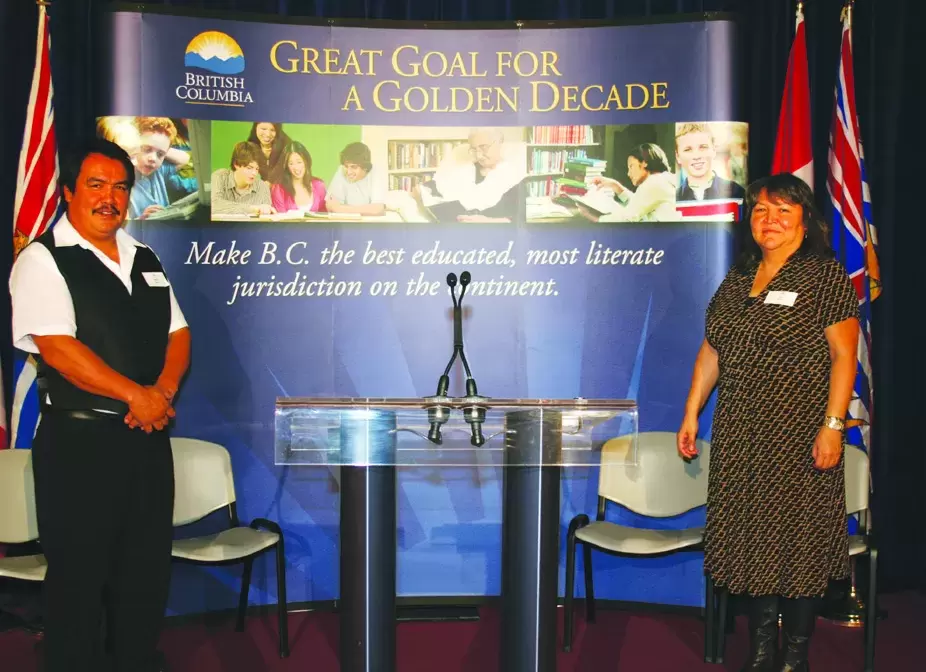On Nov. 29, Royal Assent was given to the First Nations Education Act, legislation that will allow First Nations the opportunity to create their own legislation governing First Nations education in their schools on their lands.
The act will allow First Nations to make choices about curriculum, about teaching, about things that will make education more relevant for their students, said Education Minister Shirley Bond.
The act will also help pull Tseshaht’s Haahuupayak School out from behind a financial eight-ball. Until the bill was passed, Haahuupayak received only half tuition from the province for members of its student population that did not reside on reserve. Haahuupayak is located near Port Alberni, and about 60 per cent of its student body travels from the city to attend the school.
The legislation allows for “reciprocal tuition” meaning each of those urban children will now be fully funded, helping to alleviate the financial strain the school has been under for years.
The First Nations Education Act complements the federal government’s First Nations Jurisdiction over Education in British Columbia Act.
“What it does is returns the responsibility and the law-making capacity around education to First Nations who choose to participate in the process,” said Nathan Matthew, president of the First Nations Education Steering Committee. “The idea is to have governance recognized and the right to govern ourselves, in respect to education K to 12 on reserve.
“And the other is putting education in the hands of the First Nations people to make it relevant and create successes for our learners in our schools.”
There are about 125 schools around the province that are on reserve, but not all of them will be participating immediately in the process. There are about a dozen actively negotiating to secure the jurisdiction. Tseshaht is one in that dozen.
A priority area for First Nations is language and culture curriculum.
“We do have First Nations curriculum at Haahuupayak,” said Tseshaht’s Lena Ross, an education technician who attended a press conference after the legislation was introduced on Nov. 22. “I think what we are looking at is having First Nations curriculum throughout the core subjects as well. We have the ability now to make curriculum, like in Science, Math, English. We can make it to our needs, but comparative to the school district.”
First Nations education must stay, at a minimum, at par with the provincial standards. Students graduating from First Nations’ schools will receive a Dogwood certificate that will be recognized by post-secondary learning institutions.
There is also another component of the act that allows for teachers’ training and certification.
“We have the right to set standards for who can teach in our schools, and, as well, whether they need a college degree,” said Tseshaht’s chief negotiator Martin Watts. So, for an elder to come into the school who may not have a formal education, they can be certified to teach the cultural components of the curriculum.
Part of the provincial body of First Nations negotiators has developed teachers’ certification standards, and has worked with the BC Teachers Association, which is also looking to incorporate some of the First Nations requirements in their own certification process.
“What we are all working together to accomplish in British Columbia is that we want our Aboriginal students to be more successful. And certainly in the public system we’ve seen that our completion rates for Aboriginal students are significantly lower than for non-Aboriginal students,” said Bond. “So we believe it’s time to look at a new way of helping these children be successful.”
Even in the public education system, the province is trying to find a way to create more relevant curriculum for Aboriginal students.
“We are going to continue to work together in public schools in British Columbia as well, and I can tell you that First Nations Education Steering Committee has worked very closely with us to work at the development of new courses, new opportunities,” said Bond. “So this is a dual approach, looking at how do we help all of the children in British Columbia, those on reserve and those who are in public school.”
“We don’t have a lot of secondary programs in First Nations schools,” said Matthew.
“And one of the circumstances that we have is First Nations’ schools are virtual feeders schools in most cases to the public school system, so there has to be a lot of communication.”
Bond said that the legislation has taken years of negotiation to achieve.
“It brings to fruition something that is very positive for British Columbia and we are leading the country.”
By Debora Steel







